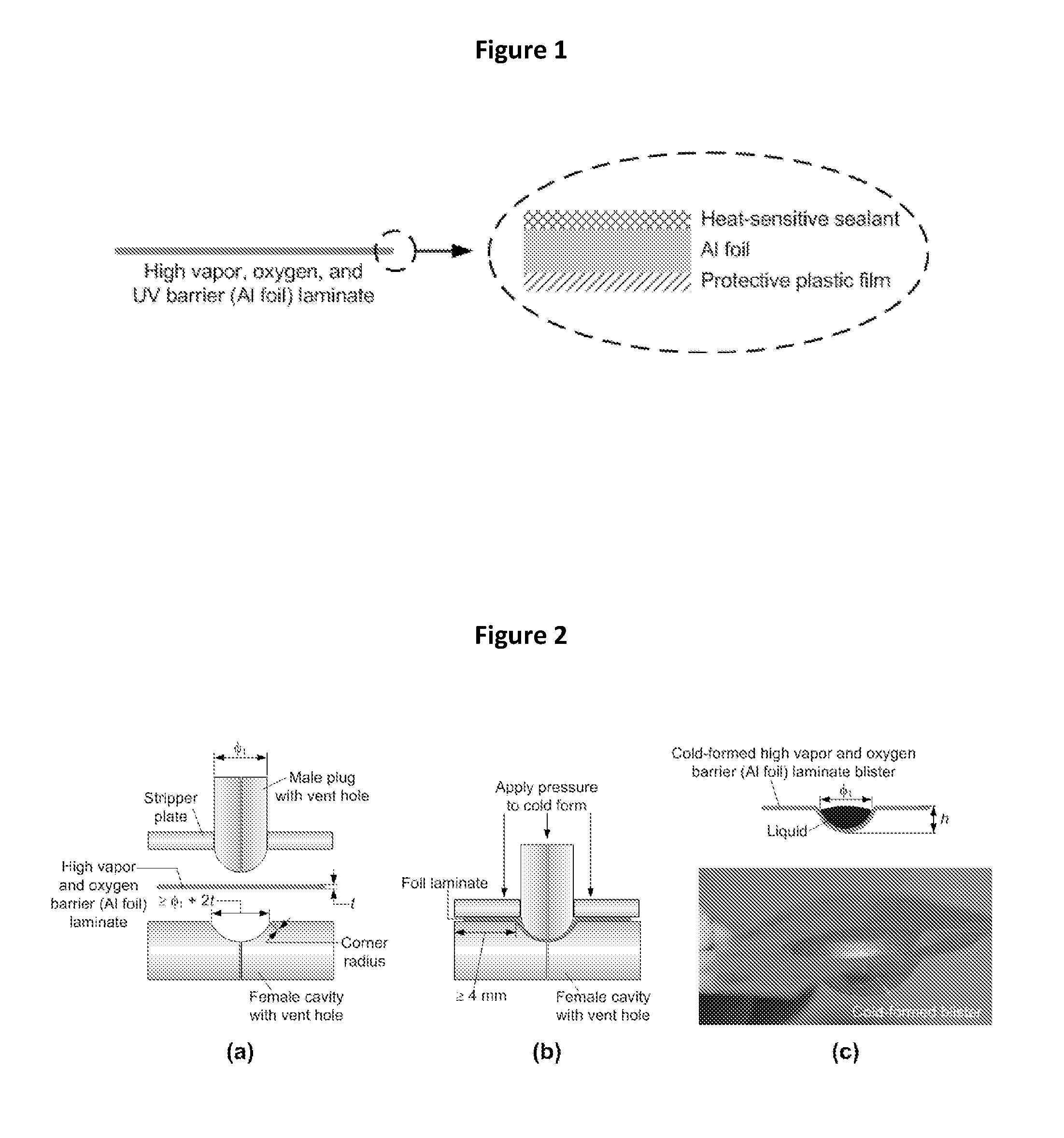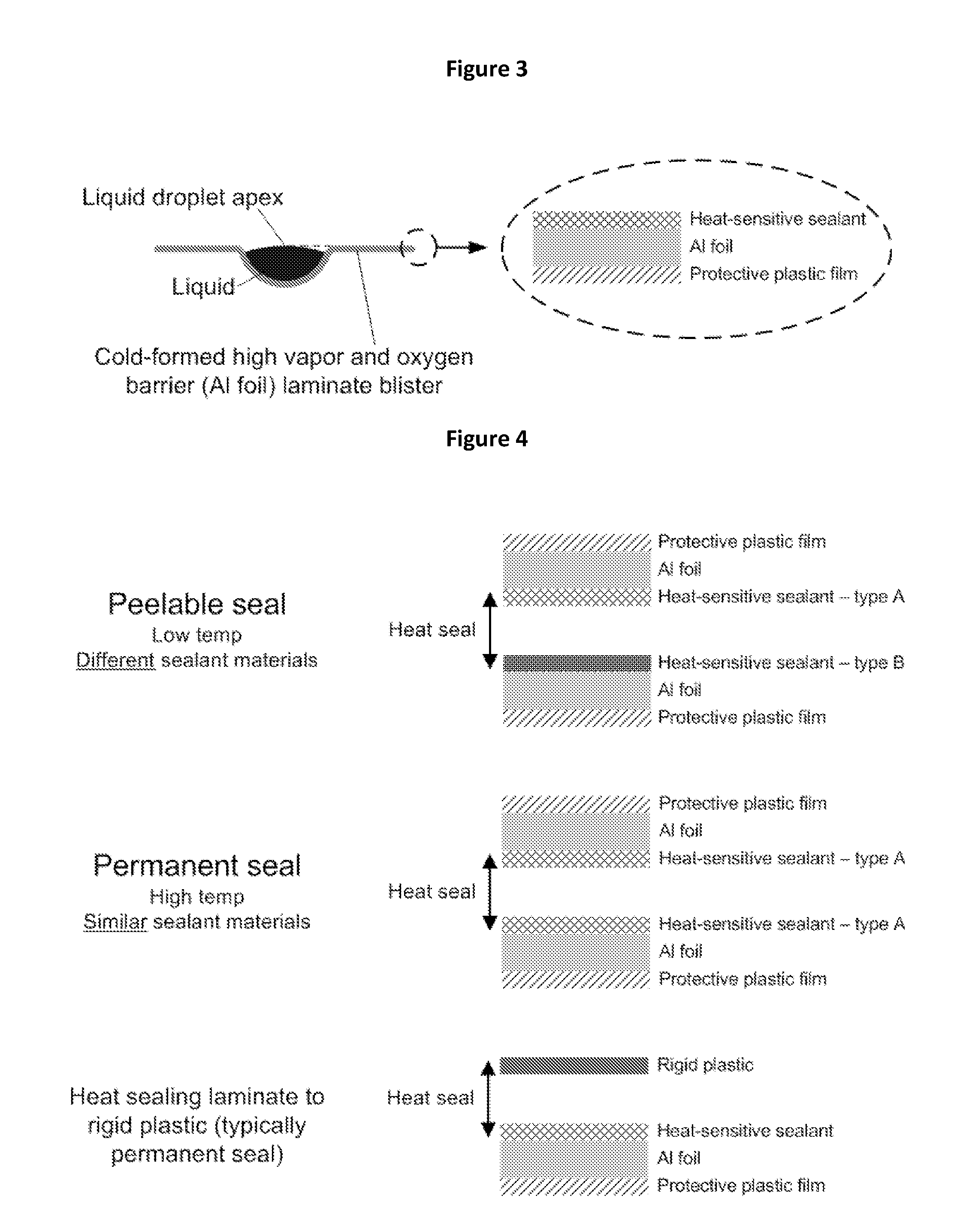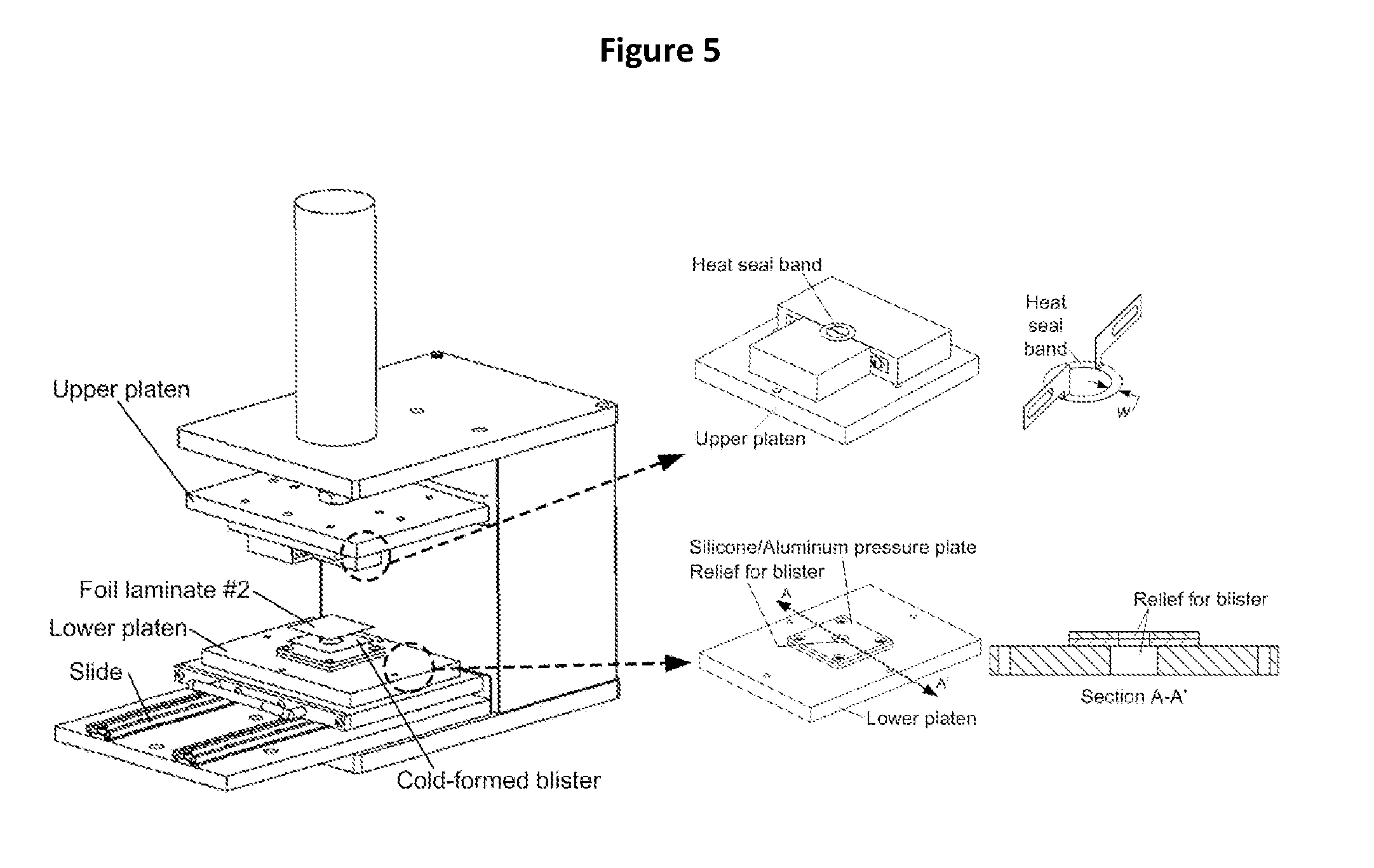Burstable liquid packaging and uses thereof
a burstable liquid and packaging technology, applied in the field of burstable liquid packaging and its use, can solve the problems of cross contamination between samples, high cost, and challenges for developing nations, and achieve the effect of reducing the number of samples, and reducing the number of burstable liquid samples
- Summary
- Abstract
- Description
- Claims
- Application Information
AI Technical Summary
Benefits of technology
Problems solved by technology
Method used
Image
Examples
example 1
Bursting Force
[0167]Experiments were conducted to ascertain how much force is required to burst open blisters. This information is used to aid in determining the correct type of stepper motor (which outputs sufficient force to depress the plunger against the blister). An Instron compression instrument was used to blindly burst open the blisters (i.e., no tear-drop clamps). The blister parameters are described below.
[0168]Lysis blisters[0169]0.72″ diameter[0170]0.20″ stroke (depth)[0171]Liquid volume=500 μL
[0172]Oil blisters[0173]0.72″ diameter[0174]0.18″ stroke (depth)[0175]Liquid volume=400 μL
[0176]Elution blisters[0177]0.55″ diameter[0178]0.150″ stroke (depth)[0179]Liquid volume=150 μL
[0180]The graphical data is shown in FIG. 18. The data plot shows the average load (force) required to burst open the elution, oil, and lysis blisters. The relatively consistent forces, as seen by the relatively narrow standard deviations, indicate that the heat sealing quality is consistent. The for...
example 2
Accelerating Aging Experiments
[0181]Experiments were conducted to quantify the heat sealing process which bonds the two foil laminates together. The quality of the heat seal has a direct impact on both the force required to burst open a blister and any liquid loss via evaporation. The blisters were stored in a forced convective oven at 42-45° C. (1-3% RH) for several weeks. Furthermore, to simulate cold shipment transportation, the blisters were exposed from room temperature (RT) to 0° C. for 16 hours, 0° C. to −20° C. for 8 hours, −20° C. to 0° C. for 16 hours, and back to RT. The liquid loss was measured through periodic weight measurements. Design of Experiments (DOE) were performed with each liquid reagent (elution, lysis, and oil) to determine the optimal time and temperature regime. It was previously determined that pressure, in the range of 50-90 psi has little or no impact on the quality of the heat seal. Blisters with no liquids were also heat sealed to determine any physic...
example 3
Liquid Volume Fill Capacity
[0207]Experiments were conducted to determine the total liquid volume fill capacity for a given blister. This is dependent on the blister diameter and stroke (depth). This information is used to determine the maximum amount of liquid than can be safely heat sealed inside a blister without overflowing (i.e., onto the heat seal perimeter) and compromising the heat seal process. This is especially useful for liquids that preferentially wet the surface of the foil laminate blister. Two blister diameters were characterized: 0.55″ and 0.72″. Multiple blisters with varying strokes (starting at the maximum stroke where the foil laminate did not tear and decreasing the depth progressively) were cold formed and heat sealed empty. A fine gauge needle was used to pierce the lidstock foil laminate and dispense liquid inside the empty blister until liquid started to spill out. This was determined to be the liquid volume fill capacity for a blister. See FIG. 19.
[0208]The...
PUM
| Property | Measurement | Unit |
|---|---|---|
| volume | aaaaa | aaaaa |
| volume | aaaaa | aaaaa |
| temperature | aaaaa | aaaaa |
Abstract
Description
Claims
Application Information
 Login to View More
Login to View More - R&D
- Intellectual Property
- Life Sciences
- Materials
- Tech Scout
- Unparalleled Data Quality
- Higher Quality Content
- 60% Fewer Hallucinations
Browse by: Latest US Patents, China's latest patents, Technical Efficacy Thesaurus, Application Domain, Technology Topic, Popular Technical Reports.
© 2025 PatSnap. All rights reserved.Legal|Privacy policy|Modern Slavery Act Transparency Statement|Sitemap|About US| Contact US: help@patsnap.com



